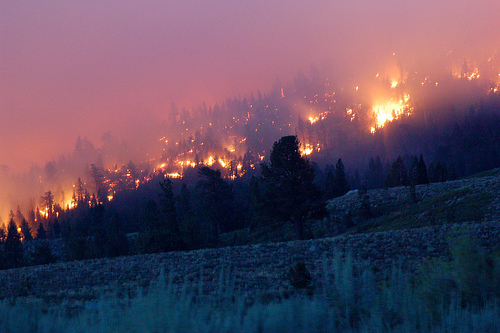 Adaptations
Adaptations
The Coast Douglas Fir is a perennial, woody plant which means it has longevity and continues growing for many years. Because of the area that it grows in the trees are often exposed to forest fires. Forest fires are a large part of the lives of organisms growing in the western forests of the United States, and the Coast Douglas Fir has developed numerous adaptations that help it to survive in this drastic environment. One of these characteristics is that they have developed a bark that is thicker then many other species of trees. The bark is also almost cork-like in the way it is composed. The trees have also developed adventitious roots, which means that they grow directly out of the trunk of the tree rather then out of other roots. This characteristic of the tree's roots make it stronger and less likely to be tipped over. The Coast Douglas Fir experiences a rapid growth cycle as well as a long individual life cycle. This allows for the abundance of trees which help it from dying out or becoming more scarce across the forests. Aside from these adaptations, older trees can benefit even more from the increasing thickness of the bark as the tree ages. All of these adaptations are important in keeping the Coast Douglas Fir prominent in these areas. Without them the Coast Douglas Fir would easily be replaced by hemlock, cedars and true firs.
Now that you know about some of the adaptations of the Coast Douglas Fir lets find out how it eats! Check out the Nutrition page to find out!
This page was created by Morgan Cook
Contact me at:
cook.morg@students.uwlax.edu